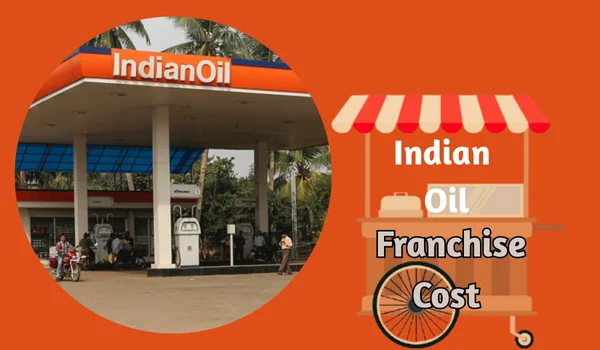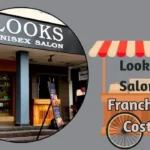Venturing into a petrol pump dealership, especially with a brand like Indian Oil Corporation Limited (IOCL), can be a high-value but highly structured opportunity. Here’s a thorough breakdown—crafted as an Indian Franchise Advisor—for those considering this investment.
Business Model: How the IOCL Retail Outlet (RO) Works
Dealership Structure
- Dealer-Owned Dealer-Operated (DODO): You (the dealer) invest in land, infrastructure, and run the pump; you earn the commission per litre sold.
- Company-Owned Dealer-Operated (CODO): IOCL invests in setup but you operate the outlet under strict terms. Your margin per litre may be lower.
Investment & Cost: What to Expect

Land & Site Requirements
- Land needed: Approximately 800–1200 sq m (8,600–13,000 sq ft) for a standard RO; rural variants (Kisan Seva Kendra) need 600–800 sq m.
- Location types: National highways, urban/suburban zones (ROs); rural roads and villages for Kisan Seva Kendras.
Financial Investment
- Rural KSK (retail outlet): Fixed non-refundable fee ~₹5 lakh.
- Regular RO: Around ₹15 lakh upfront.
- For bidding on company-owned sites: Minimum bids range from ₹10 lakh (rural) to ₹30 lakh (urban).
- Overall capex (land + infrastructure + tanks + dispensers + safety systems): Ranges from ₹25 lakh to ₹6 crore, depending on site, land cost, construction norm, and setup scale.
Operational Commission
- Commission per litre sold:
- Petrol: approx ₹2.58/litre
- Diesel: approx ₹1.65/litre
- Margins are slim—a user comment notes profits per litre may be less than ₹1, underscoring tight profitability unless volume and ancillary income compensate.
ROI & Profitability: What Does Success Look Like?
Profitability Dynamics
- Gross margin per litre is modest. Hence, location is critical—high-traffic roadways or expressive urban zones are often the backbone of profitability.
- Many industry insiders mention that earnings are long-term; one notes it may take 5–7 years to genuinely profit.
Additional Revenue Streams
To improve ROI, many dealers add:
- EV charging stations
- Convenience store (F&B, tea, snacks)
- Service bays or mini workshops
These enhance footfall and bolster margins.
Risks & Challenges
- Credit risk from bulk customers (e.g., trucking firms) can hit cash flow.
- Regulatory tensions—as a cash-heavy business, oversight is sharp; compliance is non-negotiable.
- Land lock-in: If you lease land to IOCL, it often binds you for 20–30 years.
- Selection difficulty: You cannot simply open a pump anywhere—IOCL decides based on feasibility studies, and only advertises specific locations when seeking dealers.
Eligibility Criteria: Who Can Apply?
Basic Criteria
- Age: Minimum 21 years.
- Educational Qualification:
- KSK (rural): at least literacy (ability to read/write/count).
- Regular RO: minimum 10th standard, sometimes 12th for urban sites.
- Land: Must own or have long-term lease of suitable land in the advertised site.
Financial Capacity
- Must demonstrate funds for capex, plus working capital.
- Non-refundable bid fee (₹5–15 lakh), plus refundable security (e.g., ₹10,000).
Documentation & Category Reservations
- Identity, educational certificates, financial proof (bank statements, ITR, NSC, demat), and land documents (sale deed, lease, khasra/khatauni).
- Reserved categories (SC/ST, ex-servicemen, sportspeople, freedom fighters, widows) have relaxed criteria or reserved quotas.
Step-by-Step: How to Apply
- Monitor Advertisements: IOCL publishes locations open for dealership in ads and website. Only apply for those placed in your target area.
- Conduct Feasibility/Submit EOI: Express interest when a site is listed.
- Prepare Documents & Pay Fee: Application fees (₹1,000 regular RO; ₹100 for rural; concession for SC/ST), documentation as per category.
- Site Evaluation & Interview: IOCL evaluates feasibility, your land/site, and may conduct a personal interview.
- Bid & Allocation: For some sites, bidding is required—submit bid, refundable deposit, and wait for selection.
- Issue of LoI / Appointment Letter: Once selected, you receive a Letter of Intent.
- Set-Up & Construction: Build as per IOCL specs—fuel tanks, driveways, shop, safety norms.
- Training & Launch: IOCL provides dealer training, operational SOPs; launch your RO.
- Operate & Maintain: Run operations, comply with audits, renew agreements when due.
Summary Table
| Component | Details |
| Land Required | ~800–1200 sqm (regular), 600–800 sqm (rural) |
| Upfront Cost | ₹5 lakh (rural); ₹15 lakh (urban)—plus capex ₹25 lakh – ₹6 crore total |
| Per Litre Commission | Petrol ₹2.58; Diesel ₹1.65 |
| ROI Timeline | Long-term (often 5–7 years); better with added services |
| Eligibility | ≥21 yrs, min 10th pass, land ownership/lease, financial strength |
| Application Fee | ₹100–₹1,000 (varies by category/site) |
Real-World Insights from Dealers (Reddit Voices)
“With Dealer-owned you get the whole commission per litre. … Once they accept your EOI you will have to start collecting all the permissions… Explosives license is the hardest…; you won’t turn a profit for at least 5-7 years.”
“Profit per litre may be less than a rupee… location is critical… better add EV chargers or F&B.”
“Land must be leased to oil firm for 30 years… returns limited unless add other services.”
Final Advisor Perspective
Opening an Indian Oil petrol pump is less of a “franchise” and more of a regulated dealership model—requiring significant financial capacity, compliance, and patience. But for those with prime land and long-term vision, it offers a dependable business with infrastructural alignment and demand durability.
Key Advisor Recommendations:
- Land First: Secure or lease highly visible land with long-term tenure.
- Start Small or Hybrid: Consider adding EV charging, a small convenience corner, or service bay to improve margins.
- Budget Generously: Allocate ₹30 lakh+ for setup, with buffers for delays/compliance.
- Be Compliance-First: Permits (explosives/PESO, fire NOC), audits, and transparency are critical.
- Plan for Long Haul: Expect 5-7 years to hit meaningful returns; structure operational efficiency early.

Shashi Kant is the Founder and Editor of BusinessScroller.com, a leading platform for business insights, finance trends, and industry analysis. With a passion for journalism and expertise in business reporting, he curates well-researched content on market strategies, startups, and corporate success stories. His vision is to provide valuable information that empowers entrepreneurs and professionals. Under his leadership, BusinessScroller.com has grown into a trusted source for in-depth articles, customer care guides, and financial expertise.



Petrol pump dealership enquiry
I want patrol pump
I want to install a petrol pump
I want inquiry for it (7310981843)
I want dealership for out let sale for petrol disel cng or ev charging point our land side Avilabel at village Banpurva ikauna kaisar gunj SH Road teh payagpur disst Bahraich up so kindly request to your teme please contact with us on mno 9825169825 8758477459
I AM INTERESTED FOR FUEL STATION BEETWIN BARODA TO VAPI ON DELHI-MUMBAI EXPRESSWAY
How to start indian oil pump
I want dealership for out let sale for petrol disel cng or ev charging point our land side Avilabel at village Banpurva ikauna kaisar gunj SH Road teh payagpur disst Bahraich up so kindly request to your teme please contact with us on mno 9825169825 8758477459
I interested franchise